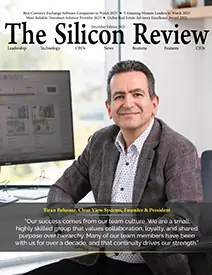>>
Industry>>
Marketing and advertising>>
Why Your Business Needs to Con...Why Your Business Needs to Continue Learning and Adapting to Market Shifts
The Silicon Review
11 April, 2025
A business that stays still in a changing market is already falling behind. Consumer expectations, technology, and competition evolve constantly, and unless a business moves with them, it doesn’t take long for relevance to fade.
The strongest companies are flexible, they know that what worked last quarter might not work tomorrow. Whether it’s adjusting operations, refining communication, or exploring new tools and markets, the ability to adapt is often what separates long-term players from short-term noise.
Nowhere is this more clear than in industries that rely on real user behavior. Take the online entertainment and gaming sector for example, where platforms have quickly aligned with consumer demand. Businesses here didn’t wait to be told what to change—they watched what people actually did, and responded.
One clear move was making transactions easier. Since credit card transactions are still among the most popular options, many of these platforms have evolved to give you a fast, familiar, and secure way to fund your online casino gaming. In practice, it meant meeting people where they already were, paying as they’re used to.
That shift wasn’t about jumping on the next big thing. It came from paying attention to what people need. When businesses stop guessing and start watching where customers get stuck, it gets easier to fix what’s broken and improve what already works.
Of course, you can find the same logic far beyond gaming. In retail, supply chain management has gone through a major shift because of global disruptions.
Companies with rigid systems took a hit, while those that had already diversified their sourcing or adopted real-time tracking were quicker to bounce back.
In the service industry, personalization is now expected. Businesses that treat every customer the same way are being quietly passed over for those that listen better and respond with more precision.
Even internal operations aren’t exempt. People want more than a schedule and a paycheck—they want to know what they’re part of and why it matters. If your team feels boxed in or unheard, they’ll move on.
That doesn’t mean bending to every request, but it does mean building a system that supports focus, motivation, and long-term contribution.
And let’s be clear: adapting doesn’t mean changing everything all at once. It means knowing which parts of your model need tuning and which still work. It’s about tracking the data that matters, asking better questions, and responding with moves that can boost your business.
Take pricing strategies, for example. Many companies cling to outdated pricing models because "that’s how we’ve always done it." But when you’re dealing with a smarter, more informed audience, the numbers need to reflect both value and competitive awareness.
Businesses that analyze customer behavior, purchasing patterns, and industry movement can shift pricing more effectively, test new structures, and avoid bleeding revenue in ways they don’t even see coming.
Another piece that often gets overlooked is how feedback is gathered and used. It’s one thing to have a “suggestion box” or an online survey, but totally different to systematically review what’s being said and find the patterns.
Customers and employees usually won’t spell things out, but they’ll always show you. Watch what happens before a sale is dropped, or why service satisfaction dips.
When pressure builds from every angle, stepping away isn’t simple. These are the moments that tell you what your business actually looks like from the outside.
Learning doesn’t always come from data, though. Sometimes it’s about listening to stories, watching what happens on the ground, or spending time with teams that rarely get heard.
Adapting starts with understanding, and that means stepping back from the boardroom lens and seeing the bigger picture. If you only ever respond to reports, you’ll miss the slow shifts that don’t show up in spreadsheets until it’s too late.
You see this clearly in how emerging markets and new technologies are reshaping entire industries. From AI integration to remote collaboration tools, the companies leading the way are the ones who built flexibility into their DNA before it became urgent.
They didn’t rely on momentum or legacy systems to carry them forward—they questioned outdated processes and rewired them for relevance.
That meant testing new workflows without upending everything, allowing real-time customer feedback to shape their product development, or shifting internal resources when demand moved in a different direction.
This kind of operational agility has been identified in numerous global market studies as a core driver of resilience, especially in industries with high volatility or short innovation cycles.
According to the OECD, companies that actively refine their strategies based on evolving market feedback—not just quarterly performance reports—are significantly more likely to maintain profitability during periods of economic uncertainty.
That means businesses that focus on continuous learning, both from their audience and from internal inefficiencies, often outperform competitors that lean too heavily on brand strength or past success.
Key Takeaways
- Behavioral economics shows that real-world decisions are rarely made on perfect information; successful businesses adapt by reducing friction in customer experience and simplifying choice.
- Market dynamics are nonlinear — flexibility allows firms to adjust to complex shifts without losing momentum.
- Cognitive biases like status quo bias and loss aversion can hold back innovation; overcoming them internally is key to staying competitive.
- Adaptive systems outperform rigid ones during volatility, a pattern confirmed across multiple global industries in post-disruption studies.
- Strategic learning, supported by constant feedback and cross-functional insights, improves forecasting accuracy and long-term performance.


_2025-11-17_06-38-14.webp)

 (1)_2025-10-21_13-35-14.webp)

_2025-10-02_10-21-48.webp)